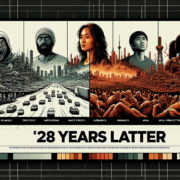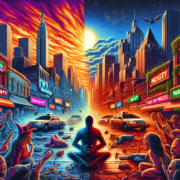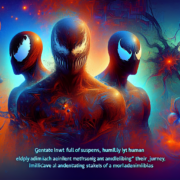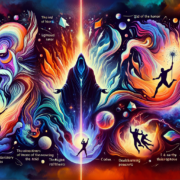
Exploring the Genius of Kurt Vonnegut Through His Timeless Books
Examining the Magnificence of Kurt Vonnegut Through His Classic Works American writer Kurt Vonnegut, known for his distinctive fusion of dark humor, science fiction, and satire, has made a lasting impression on the literary world. His writings continue to strike a chord with readers of all ages because of their unorthodox storytelling techniques and deep philosophical insights. Vonnegut stands out as a literary genius because of his ability to approach difficult subjects like free will, the absurdity of war, & the human condition through wit and irony.
Key Takeaways
- Kurt Vonnegut’s books are timeless and continue to resonate with readers today.
- Vonnegut’s unique blend of satire, science fiction, and social commentary sets his work apart.
- His most famous works, such as “Slaughterhouse-Five” and “Cat’s Cradle,” tackle heavy themes with dark humor and wit.
- Vonnegut’s writing style is characterized by its simplicity and directness, making his books accessible to a wide audience.
- Through his books, Vonnegut challenges readers to question the status quo and consider the absurdity of human existence.
This article explores Vonnegut’s most important works, the recurrent themes that run throughout his writing, and his enduring influence on literature and culture in order to unearth the essence of his genius. Vonnegut wrote a vast amount of literature over the course of several decades, including plays, essays, short stories, & novels. Many consider his most well-known book, “Slaughterhouse-Five,” which was released in 1969, to be a foundational piece of American literature. The semi-autobiographical novel recounts Vonnegut’s experiences as a prisoner of war during the World War II bombing of Dresden. “Cat’s Cradle,” which was published in 1963, is another important work that exemplifies Vonnegut’s brilliance. Science, religion, and the folly of human endeavors are all explored in this book.
A satirical look at the pursuit of meaning in a chaotic world is provided by the fictional religion of Bokononism, which is the subject of the story. By means of Dr. Felix Hoenikker, Vonnegut challenges the moral ramifications of scientific progress & the human propensity to develop destructive technologies without taking their effects into account. Vonnegut’s ability to infuse humor into weighty subjects and make difficult concepts understandable to a wide audience is demonstrated by the novel’s joyful yet moving examination of existential issues. “Cat’s Cradle” is still a potent critique of the state of humanity and our unrelenting quest for knowledge, which frequently comes at the price of our moral sensibilities.
Kurt Vonnegut is renowned for his unique narrative style, which frequently goes against accepted storytelling conventions. He usually uses a disjointed framework that reflects the disorderly aspect of life in general. To illustrate the randomness and unpredictable nature of life, the non-linear timeline in “Slaughterhouse-Five,” for example, enables readers to experience Billy Pilgrim’s life events in a fragmented fashion. This method encourages readers to reflect on the nature of memory & time in addition to keeping them interested. Further obfuscating the distinction between fiction and reality is Vonnegut’s use of metafiction, in which he admits his authorship within the story.
| Book Title | Publication Year | Genre | Sales |
|---|---|---|---|
| Slaughterhouse-Five | 1969 | Science Fiction | Over 7 million copies |
| Cat’s Cradle | 1963 | Science Fiction | Over 1 million copies |
| Breakfast of Champions | 1973 | Satire | Over 1 million copies |
By integrating himself into his narratives or speaking directly to the reader, he establishes a close relationship that promotes contemplation of the subjects he examines. Vonnegut’s prose is also distinguished by its clarity and simplicity, which stands in stark contrast to the intricacy of the concepts he conveys. Because he frequently uses simple language and short sentences, a broad audience can understand his work. Because of this stylistic decision, readers can interact with deep philosophical ideas without being overpowered by technical academic jargon. For instance, in “Breakfast of Champions,” Vonnegut crafts a multifaceted reading experience by enhancing his narrative with illustrations and whimsical typography.
He is a brilliant writer, as evidenced by his ability to express profound truths in seemingly straightforward stories. Vonnegut democratizes literature by dismantling the boundaries between popular fiction and highbrow literature & encourages readers from all backgrounds to consider life’s most important issues. Recurring themes in Vonnegut’s writings reflect his worldview and challenge social conventions. One recurring theme is the ridiculousness of war and how it dehumanizes people.
In “Slaughterhouse-Five,” Billy Pilgrim’s experiences as a soldier and prisoner serve as a vehicle for Vonnegut’s exploration. The way the bombing of Dresden is portrayed in the book is a potent critique of the pointlessness of war. Vonnegut forces readers to face difficult realities about violence & its effects on humanity by portraying war as an unavoidable aspect of human existence while also emphasizing its terrible outcomes. His examination of this subject strikes a deep chord in today’s culture, where debates concerning war and its effects are still relevant today. The criticism of technology & its effects on human life is another important theme in Vonnegut’s writing. Vonnegut imagines a society devoid of purpose and alienated from one another in his 1952 debut novel, “Player Piano,” where machines have supplanted human labor.
This dystopian scenario highlights the perils of unbridled technological development and how it can deprive people of their independence. In “Cat’s Cradle,” he similarly explores the moral conundrums raised by scientific advancement via the prism of Bokononism, a fictional religion that parodies people’s search for purpose in a world growing more & more automated. Vonnegut challenges readers to think about their relationship with technology & the ethical obligations that come with scientific advancement by tackling these issues. Kurt Vonnegut has had a significant impact on modern literature and culture that goes well beyond his own creations. He has influenced countless writers who aim to question established storytelling norms with his inventive narrative techniques.
Authors like Neil Gaiman and David Foster Wallace have acknowledged Vonnegut as having had a big impact on their writing, especially in terms of their use of metafiction & genre blending. Due in large part to Vonnegut’s willingness to experiment with form and content, the postmodern literary movement opened up new forms of expression for later generations. Also, readers today can relate to Vonnegut’s social commentary as they consider topics like existentialism, technology, and war. His works have become timeless classics that are still studied in academic settings and appreciated by both casual readers and scholars due to his ability to tackle difficult subjects with empathy and humor. His teachings about the shortcomings and hopes of humanity are still relevant in a time of swift technological advancement & international strife.
Vonnegut’s observations act as a reminder of our common humanity and the value of compassion in a world growing more divided as society works through these issues. To sum up, Kurt Vonnegut’s brilliance is found in both his skillful storytelling and his capacity to use literature to elicit reflection and motivate change. He has established himself as one of America’s most significant writers thanks to his distinctive narrative style, recurrent themes, and insightful social commentary. Through pieces like “Slaughterhouse-Five” and “Cat’s Cradle,” he challenges readers to face difficult realities about technology, war, and humanity while retaining a sense of humor that humanizes these difficult subjects. As we delve deeper into Vonnegut’s classic works, we are reminded of the ability of literature to shed light on our common experiences and subvert social mores.
In addition to his written works, his legacy lives on in the innumerable writers he has influenced & the discussions he has triggered about what it means to be human in a world growing more complicated by the day. In a time when literature frequently addresses related subjects, Vonnegut’s voice is still relevant today—a lighthouse pointing us in the direction of self-awareness and interpersonal understanding amid the absurdities of life.
If you’re a fan of Kurt Vonnegut’s unique blend of satire, science fiction, and dark comedy, you might be interested in exploring further content related to his works. For those looking to delve deeper into themes similar to those found in Vonnegut’s books, I recommend visiting Wave Magnets. This site often features articles and discussions that align with the quirky and thought-provoking style reminiscent of Vonnegut’s storytelling. Whether you’re a long-time fan or new to his novels, Wave Magnets can provide you with a fresh perspective on similar literary works and discussions.
FAQs
What are some popular Kurt Vonnegut books?
Some popular Kurt Vonnegut books include “Slaughterhouse-Five,” “Cat’s Cradle,” “Breakfast of Champions,” “Mother Night,” and “Player Piano.”
What genre does Kurt Vonnegut primarily write in?
Kurt Vonnegut primarily wrote in the science fiction and satire genres, often blending elements of both in his works.
Are Kurt Vonnegut books suitable for young readers?
While some of Kurt Vonnegut’s works may be suitable for young adult readers, many of his books contain mature themes and language, so it’s best to check the specific book’s content before recommending it to young readers.
Did Kurt Vonnegut write any non-fiction books?
Yes, Kurt Vonnegut wrote several non-fiction books, including “A Man Without a Country” and “Palm Sunday: An Autobiographical Collage.”
What is the writing style of Kurt Vonnegut?
Kurt Vonnegut’s writing style is often characterized by dark humor, satire, and a unique blend of science fiction and social commentary. He also frequently used a non-linear narrative structure in his works.

















